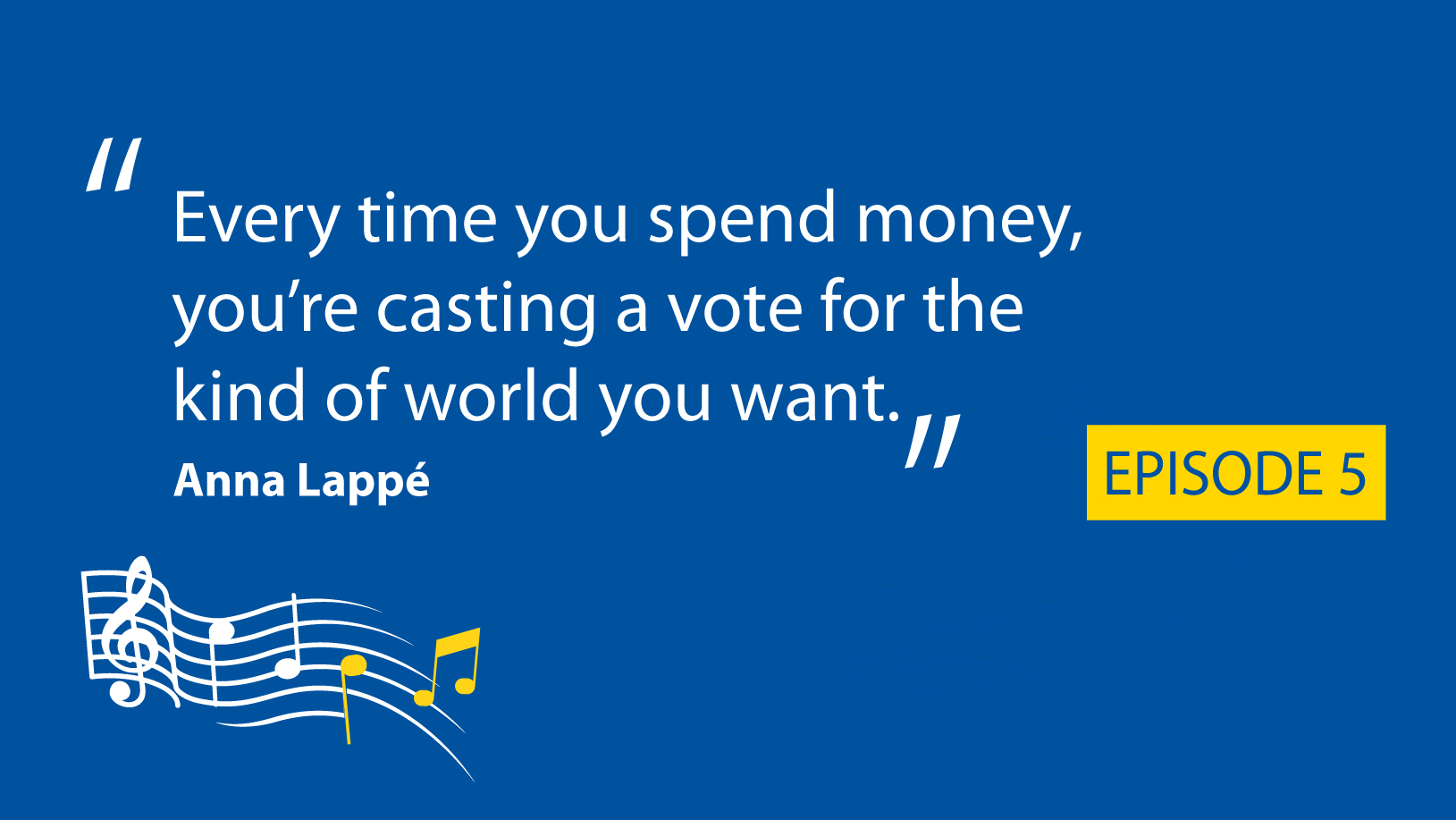Eligible expenditure

A discussion with Oana Dordain, Deputy Head of Unit and Ieva Zālīte, Policy Officer of the European Commission’s DG REGIO (Directorate-General for Regional and Urban Policy), hosted by Desmond Gardner from the fi-compass team at EIB.
This is Calling the tune, a new fi-compass podcast series on financial instruments under the new Common Provisions Regulation. This is Desmond Gardner, from the fi-compass team at EIB. “Every time you spend money, you’re casting a vote for the kind of world you want,” the words of author and campaigner Anna Lappé. In this episode, I am joined by Oana Dordain, and Ieva Zālīte from DG REGIO at European Commission to discuss eligible expenditure for financial instruments under the new CPR. Oana, Ieva, welcome back.
Oana: Thank you Desmond. Hello everybody.
Ieva: We are very happy to be here, Desmond.
Today, we are looking at the part of the CPR that deals with eligible expenditure. Before we get to the specific rules for financial instruments, Oana, can we briefly consider the general rules? What are the key points to note?
Oana: I would like to remind to our listeners that financial instruments are an implementation mode, and that the eligibility force comes mainly from the programmes, because financial instruments should be used to achieve the objectives of the specific programmes. You are right that first, we should start by describing the general eligibility rules and this article sets out the fact that double support should be avoided. It also mentions the edibility period, which is from 2021 until 2029, implying that the support to final recipients should be done before 2029. I would also like to mention some rules, which are related to the acquisition of land and VAT. For the acquisition of land, it is possible to have eligible expenditure of up to 10% of the investment, at the level of the final recipient or for specific cases up to 15%. The thresholds are the same as in the current CPR. Regarding the VAT, the rules did not change either. For financial instruments, VAT for investments at the level of the final recipients, is eligible. In case of combination of financial instruments and grants in one financial instrument operation, the rules for VAT for the grant part are the same as the general rules for grants for VAT. It means that if the grant is below EUR 5 million, the VAT is eligible. If the grant is above EUR 5 million, including the VAT, the VAT is not eligible. I would also like to mention that durability provisions do not apply to financial instruments.
We have the specific rules for financial instruments. Please, can you describe how eligible expenditure is calculated for different types of financial instruments?
Oana: First, I would like to say to our listeners that the purpose of the Commission was to bring all the eligibility rules in one place and to have them in the CPR. I would also like to say that eligible expenditure refers to what is paid to final recipients for loans, equity or quasi-equity investments. Additionally, it refers to the resources set aside for guarantee contracts, to payments, to or for the benefit of final recipients in the case when the grant is combined with financial instruments, and to the payment of management costs and fees.
It also means that what is not in this article is not eligible. I would also like to add that second round investments are not eligible resources, as we received this question several times from the managing authorities. This article also presents a facilitation of the combination of financial instruments across consecutive managing periods. We wanted to use this to replace the current escrow occurrence, which allowed to continue investments, which are longer than the eligibility periods.
Can we look at the use of the multiplier in a bit more details? It is calculated in the ex-ante risk assessment, but can be adjusted to respond to market conditions. Could you give a practical example of how this works?
Oana: This is quite a difficult issue and I will try to clarify it for our listeners. When we refer to guarantees, we need to have a multiplier. And the example would be that if you put a programme contribution of 10, ERDF for example and national co-financing, it is expected that this will generate an investment of, let’s say, 40.. This means a multiplier of four and this is very important and it is regulated mainly in the definition of the CPR, and there we can see that the multiplier ratio is established on the basis of a prudent ex-ante risk assessment. This is a banking practice and our listeners should not confuse the ex-ante risk assessment with the ex-ante assessment, which was done when the financial instrument was set up. Here, the managing authority has to sign a funding agreement with the body implementing the financial instrument, and in this funding agreement it should be decided how much the multiplier will be, on the basis of the market conditions. After, the body implementing the financial instruments will select the banks, which will give the loans to final recipients. It is indicated that if the agreed amount of loans is not disbursed, the eligible expenditure is reduced proportionally. Of course, the multiplier ratio can be adjusted during the implementation given the market conditions and how the portfolio of loans reacted in reality. It means that if the loans are not paid back as foreseen, the guarantor or the body implementing the financial instruments has to adjust the risk and to modify the multiplier ratio. However, as it is defined in the article, the multiplier ratio cannot affect the loans, which are paid back. Indeed, the change of the multiplier ratio will not change the eligible expenditure for the loans, which were paid back, because those loans do not bear any risk anymore.
Let’s now turn to the part of the new CPR that relates to management costs and fees. Ieva, there are several features of the rules in this area. Let’s start with the easiest part which is when a financial intermediary is selected through a competitive tender. What are the rules in such a case?
Ieva: In relation to management costs and fees, this is the easiest part in these provisions. Indeed, when a financial intermediary is selected through an open tender, the price of the service that this financial intermediary will deliver is the outcome of the competition and the calculation and the remuneration methodology will be established in the funding agreement. These management costs and fees charged by the financial intermediary will be declared as eligible expenditure to the Commission.
Moving on to direct award: there are a number of different thresholds for management costs and fees. Please, could you summarise them for our listeners?
Ieva: Here, I would like to highlight that the provisions recognise the differentiation between different types and products and this is reflected in the thresholds. So, where the bodies implementing a holding fund are selected in a direct award of contract, the agreed percentages are 5% for holding funds where guarantee or loan funds operate in the holding fund’s structure or it is 7% if the holding fund covers an equity fund. For the bodies implementing a specific fund, the thresholds are different and for specific funds, which provide loans and guarantees, the percentage is set to be 7% and in case of equity, it is set to be 15%.
The CPR requires the fees to be performance-based. What sort of methodology do you expect to see adopted by managing authorities? Will it depend on the type of financial instruments?
Ieva: Yes, indeed. If we compare it to the past, many of our listeners will recall that in the programming period 2014-2020, we have a very extensive calculation methodology for determining eligible management costs and fees, where the financial intermediaries are awarded the contract directly. For the future, this calculation methodology is significantly simplified and when we look at the text of the Common Provisions Regulation, we see that all the provisions in relation to the management costs and fees are brought into the main text of the regulations. So, we no longer need to look into different legal acts, all the rules are in one place. If we speak about the methodology itself, in a way, it is quite simple, because to determine eligible management costs and fees we have to take the thresholds, the percentages that we talked about just before, and we apply these thresholds to the amounts of programme resources disbursed to final recipients or, in case of guarantees, to the amounts set aside for guarantee contracts. So, overall, this calculation is much more simple. And the final amounts of the eligible management costs and fees, will be known at closure of the programmes. What is also important to recall, and here the rules have not changed, are the arrangement fees or any part that financial intermediary charges to final recipients. These amounts should not be declared as eligible expenditure.
Finally, we discussed in an earlier episode of this podcast how, where financial instruments and grants are combined in a single operation, the financial instruments rules apply. Oana, is this the case when calculating management costs and fees for these combined financial instruments?
Oana: Yes, Desmond. The management costs and fees are also calculated on the basis of the grant which is combined with the financial instruments in one operation.
Many thanks Oana and Ieva. As ever you have been very open and clear about how these regulations will operate.
Oana: I would like to say that we tried to simplify the eligibility rules, but nothing changed, except for the additional flexibility, which was brought for the continuation of financial instruments from one programme to another. And, as you said in the beginning, Member States should do the best use of their money when implementing financial instruments and to try to better achieve the programme objectives. Maybe with resources paid back, maybe with a bigger leverage. It is their decision and we trust that they will do the best choices.
Ieva: I would like to thank our listeners for the attention and I hope that the eligibility rules, being now in one legal text, will help and facilitate the implementation of financial instruments.





